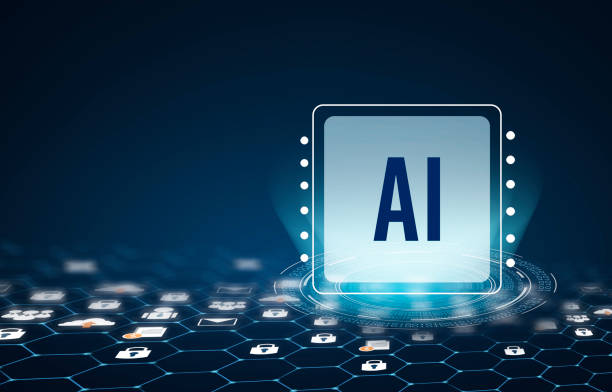What is an Artificial Intelligence Robot? Basic Definitions and Concepts
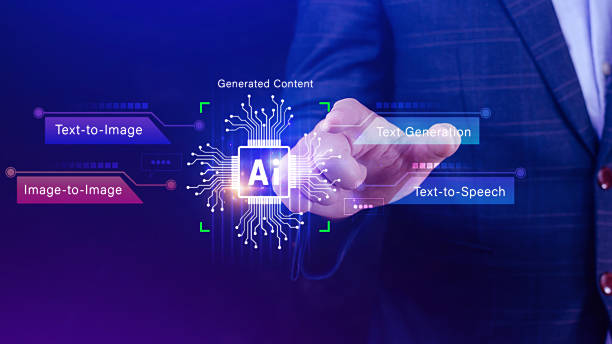
What is an Artificial Intelligence Robot? Basic Definitions and Concepts
#ArtificialIntelligenceRobot is a combination of two distinct fields: #Robotics and #Artificial_Intelligence.
Simply put, AI robots are robots that use artificial intelligence algorithms to perform tasks that usually require human intelligence.
These tasks include learning, reasoning, problem-solving, sensory perception, and interaction with the environment.
AI robots can come in a variety of forms and sizes, from large industrial robots used in factories to software robots (chatbots) used in online customer service.
The common thread between all these robots is their ability to make decisions and act independently based on data they receive from their environment.
In defining an AI robot, it should be noted that simply having pre-programmed capabilities does not make a robot intelligent.
Intelligence is achieved when the robot can learn from its experiences, adapt to new conditions, and make more optimal decisions.
These capabilities allow the robot to operate effectively in complex and unpredictable environments.
For example, a robot working in a warehouse can use AI to find optimal routes for moving goods, avoid collisions with obstacles, and even automatically change its route if a problem arises.
By integrating robotics and artificial intelligence, AI robots enable the automation of complex tasks and provide innovative solutions.
Is your company’s website performing as it should for your brand? In today’s competitive world, your website is your most important online tool. Rasaweb, a specialist in professional corporate website design, helps you to:
✅ Gain the credibility and trust of your customers
✅ Turn website visitors into customers
⚡ Get a free consultation!
Types of AI Robots and Their Applications
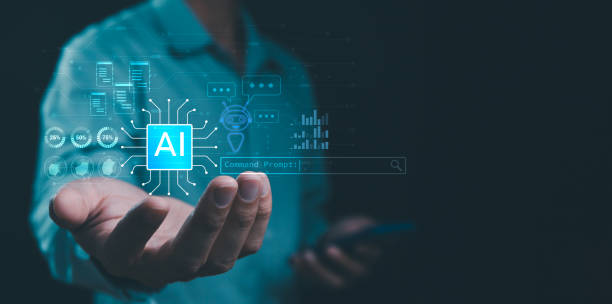
Types of AI Robots and Their Applications
AI robots are divided into different types based on their application and the type of artificial intelligence used in them.
Some of the most important types of AI robots include:
- Industrial Robots These robots are used in factories to perform repetitive and heavy tasks such as welding, painting, and assembling parts.
Industrial AI robots can work with higher accuracy and speed than humans and reduce production errors. - Service Robots These robots are used in various environments such as hospitals, hotels, and restaurants to provide services to customers.
Service AI robots can perform tasks such as delivering food, cleaning, and providing information. - Medical Robots These robots are used in surgeries, rehabilitation, and patient care.
Medical AI robots can operate with greater precision than human surgeons and help improve treatment outcomes. - Space Robots These robots are used for space exploration and conducting scientific research in harsh and dangerous conditions.
Space AI robots can sample soil from planets, repair space equipment, and collect scientific data. - Chatbots These robots are software programs used to answer customer questions and provide online support services.
Chatbots can automatically answer frequently asked questions and direct customers to the relevant departments.
Each of these robots performs its tasks using specific AI algorithms.
For example, industrial robots may use reinforcement learning algorithms to optimize their movements, while chatbots use natural language processing to understand and respond to user questions.
Main Components of an AI Robot
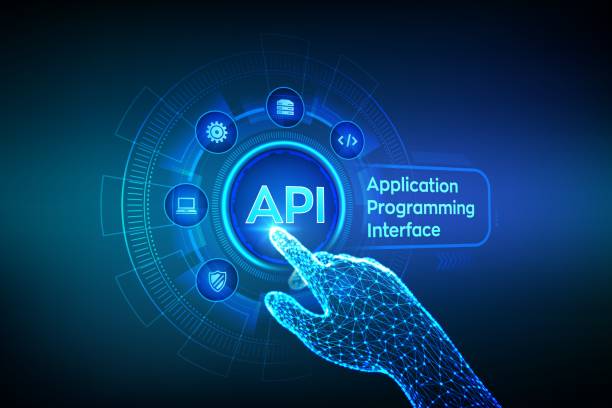
Main Components of an AI Robot
An AI robot consists of several main components that work together to enable intelligent tasks.
These components include:
- Sensors Sensors collect information from the surrounding environment.
This information can include images, sounds, temperature, pressure, and other sensory data. - Processor The processor processes the data collected by the sensors and makes necessary decisions based on artificial intelligence algorithms.
- Motors and Actuators Motors and actuators execute the processor’s commands and cause the robot to move and perform tasks.
- AI Software AI software includes machine learning algorithms, neural networks, and other AI techniques that allow the robot to learn from data, make decisions, and interact with its environment.
For example, in a self-driving car, the sensors include cameras, lidar, and radar that collect information about the vehicle’s surroundings.
The processor processes this information and makes the necessary decisions to guide the vehicle.
The car’s motors and steering system execute the processor’s commands and cause the vehicle to move and steer.
AI software allows the car to learn from its experiences and improve its performance.
In an AI robot, the interaction between these components is very important.
Sensors send information to the processor, the processor makes decisions, and the motors and actuators execute these decisions.
This cycle is repeated continuously, allowing the robot to dynamically interact with its environment and perform its tasks effectively.
| Component | Description |
|---|---|
| Sensors | Collect data from the environment (e.g., cameras, lidar). |
| Processor | Processes data and makes decisions using AI algorithms. |
| Actuators | Execute commands from the processor (e.g., motors). |
Current Challenges and Limitations of AI Robots
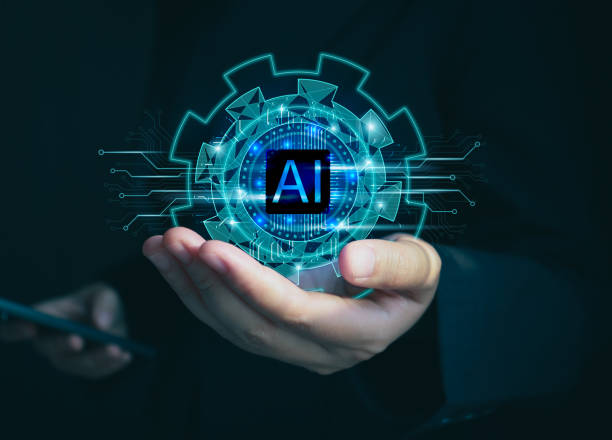
Current Challenges and Limitations of AI Robots
Despite the remarkable advances in artificial intelligence and robotics, AI robots still face numerous challenges and limitations:
- High Cost Designing, developing, and manufacturing AI robots is very expensive.
This high cost prevents the widespread use of these robots in many industries. - Complexity Developing AI software for robots is very complex and requires a high level of expertise and skill.
- Security AI robots can be vulnerable to cyberattacks and cause serious damage.
- Ethics The use of AI robots in some areas, such as warfare and elderly care, raises serious ethical issues.
- Limitations in Learning AI robots still cannot learn from their experiences and adapt to new conditions as well as humans.
For example, a self-driving AI robot still cannot drive safely in adverse weather conditions or in heavy traffic.
Also, elderly care robots still cannot fully meet the emotional and psychological needs of the elderly.
To overcome these challenges, researchers and developers are working to improve AI algorithms, reduce costs, and increase the security of robots.
Also, efforts are being made to develop ethical rules and regulations for the use of AI robots.
Are you tired of your company’s website not meeting your expectations? With Rasaweb, design a professional website that showcases the true face of your business.
✅ Increase new customer acquisition and sales leads
✅ Increase the credibility and trust of your brand among your audience
⚡ Get a free website design consultation!
What Expectations Should We Have for the Future of AI Robots?
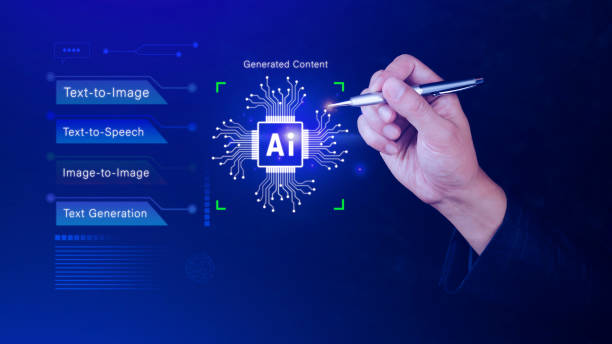
What Expectations Should We Have for the Future of AI Robots?
The future of AI robots looks very bright and promising.
With continuous advances in artificial intelligence and robotics, AI robots are expected to play a more important role in our lives.
Some of the most important expectations for the future of AI robots include:
- Wider Automation AI robots will be used more extensively in various industries in the future and will automatically perform many repetitive and dangerous tasks.
- Greater Intelligence AI robots will have greater intelligence in the future and will be able to learn, reason, and solve problems independently.
- Better Interaction with Humans AI robots will be able to interact more naturally and effectively with humans in the future and will act as human collaborators and assistants.
- Expanding Applications AI robots will be used in new areas such as education, entertainment, and art in the future.
For example, AI robots in the future can act as private tutors for students, play a role in making films and video games, and even create works of art.
Also, AI robots can help people with disabilities and the elderly live more independent lives.
However, it should be noted that the development and use of AI robots require careful planning and attention to ethical issues.
To prevent potential problems, appropriate laws and regulations should be developed for the use of these robots, and necessary training should be provided to individuals.
Impact of AI Robots on the Labor Market
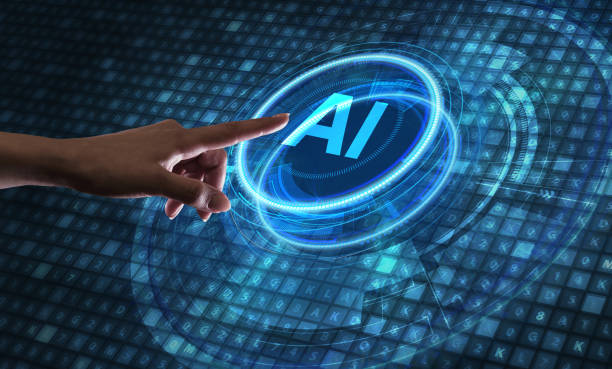
Impact of AI Robots on the Labor Market
One of the most important and controversial topics related to AI robots is their impact on the labor market.
Some experts believe that AI robots will eliminate many jobs, while others believe that these robots will create new job opportunities.
The reality is that AI robots can be both a threat and an opportunity for the labor market.
On the one hand, these robots are capable of performing many repetitive and simple tasks that are currently performed by humans.
This can lead to the loss of jobs that require low skills.
On the other hand, AI robots can create new job opportunities in areas such as AI software development, robot maintenance and repair, and training people to work with robots.
Also, these robots can help humans perform their tasks more effectively and with higher quality.
For example, AI robots can help doctors diagnose diseases, help lawyers review cases, and help teachers educate students.
This can lead to increased productivity and improved quality of services.
To address the challenges of automation, governments and organizations must provide appropriate training and empowerment programs to help individuals acquire new skills and adapt to changes in the labor market.
Also, it should be noted that AI robots should not completely replace humans, but should act as human collaborators and assistants.
Using AI robots creates new job opportunities.
How to Design and Develop an AI Robot
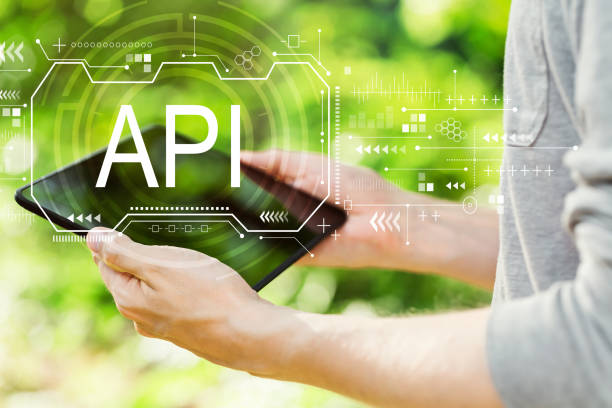
How to Design and Develop an AI Robot
Designing and developing an AI robot is a complex and multi-step process that requires expertise and skill in various fields such as robotics, artificial intelligence, programming, and electrical engineering.
The main steps in designing and developing an AI robot include:
- Define the Goal First, the goal of designing and developing the AI robot must be determined.
What task should the robot perform and what need should it address? - Hardware Selection Based on the goal, the appropriate hardware for the robot must be selected.
This hardware includes sensors, processor, motors, and actuators. - Software Development AI software must be developed based on machine learning algorithms, neural networks, and other AI techniques.
- Robot Training The robot must be trained using appropriate training data so that it can perform its tasks effectively.
- Testing and Evaluation The robot must be fully tested and evaluated to ensure that its performance meets expectations.
- Optimization If necessary, the robot should be optimized to improve its performance.
For example, to design a self-driving robot, the goal of designing the robot must first be determined.
Should the robot drive in the city or on intercity roads? Then, the appropriate hardware for the robot must be selected.
This hardware includes cameras, lidar, radar, processor, and motors.
Then, AI software must be developed based on machine learning algorithms.
Then, the robot must be trained using appropriate training data.
Finally, the robot must be fully tested and evaluated, and optimized if necessary.
Ethical Issues Related to AI Robots

Ethical Issues Related to AI Robots
The development and use of AI robots raise serious ethical issues that must be addressed.
Some of the most important ethical issues related to AI robots include:
- Accountability If an AI robot makes a mistake, who is responsible? The robot’s designer, the robot’s manufacturer, or the robot’s user?
- Privacy AI robots can collect a lot of information about people.
How can we protect people’s privacy? - Justice AI robots can be discriminatory.
How can we ensure fairness in the use of AI robots? - Security AI robots can be vulnerable to cyberattacks.
How can we ensure the security of AI robots? - Autonomy Should AI robots be autonomous? If so, to what extent?
For example, if a self-driving AI robot causes an accident, who is responsible? Is the car manufacturer responsible or the car driver? Also, if an AI robot in a hospital makes a mistake in treating a patient, who is responsible? Is the doctor responsible or the robot manufacturer?
To resolve these ethical issues, appropriate laws and regulations must be developed for the use of AI robots.
Also, necessary training should be provided to individuals so that they can use AI robots responsibly.
| Ethical Issue | Description |
|---|---|
| Accountability | Who is responsible for errors made by AI robots? |
| Privacy | How can we protect individual privacy when AI robots collect data? |
| Fairness | How can we ensure fairness in the use of AI robots? |
Did you know that 94% of users’ first impressions of a business are related to its website design? With professional corporate website design by **Rasaweb**, turn that first impression into an opportunity for growth.
✅ Attract more customers and increase sales
✅ Create credibility and trust in the eyes of the audience⚡ Get a free website design consultation!
Current Situation and Outlook of AI Robots in Iran
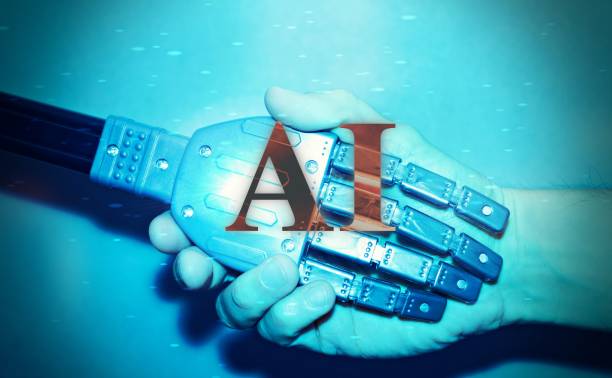
Current Situation and Outlook of AI Robots in Iran
In Iran, the field of AI robots is developing, and efforts are underway to develop and use this technology in various fields.
Some of the most important activities in the field of AI robots in Iran include:
- Scientific Research Universities and research centers in Iran are conducting scientific research in the field of artificial intelligence and robotics.
- Software Development Software companies in Iran are developing AI software for various applications.
- Robot Manufacturing Manufacturing companies in Iran are manufacturing industrial and service robots.
- Training Various training courses in the field of artificial intelligence and robotics are offered in Iran.
However, the field of AI robots in Iran is still in the early stages of development and faces challenges such as a shortage of financial resources, a shortage of skilled labor, and a lack of appropriate infrastructure.
Despite these challenges, given Iran’s high potential in the field of artificial intelligence and robotics, this field is expected to grow significantly in the future.
AI robots in Iran need investment and the creation of a suitable platform.
Given that artificial intelligence is expanding in all fields, special attention should be paid to this area.
AI Robot Learning Resources for Enthusiasts
![]()
AI Robot Learning Resources for Enthusiasts
If you are interested in learning about AI robots, various educational resources are available to you.
Some of the most important of these resources include:
- Online Courses Online educational platforms such as Coursera, Udacity, and edX offer various courses in the field of artificial intelligence and robotics.
- Books Numerous books are available in the field of artificial intelligence and robotics that you can use to learn basic and advanced concepts.
- Scientific Articles Scientific articles published in journals and conferences can provide you with up-to-date and specialized information about AI robots.
- Practical Projects Doing practical projects can help you learn theoretical concepts practically and strengthen your skills.
- Forums and Groups Membership in online and offline forums and groups can help you connect with other AI robot enthusiasts and benefit from their experiences.
To start learning, you can use free online courses and introductory books.
Then, you can gradually move on to more advanced resources and participate in practical projects.
Also, by joining forums and groups, you can connect with other AI robot enthusiasts and benefit from their experiences.
AI robots require continuous learning and updating of knowledge.
Frequently Asked Questions
| Row | Question | Answer |
|---|---|---|
| 1 | What is an AI robot? | An AI robot is a machine capable of understanding, reasoning, learning, and problem-solving, and can perform complex tasks with relative autonomy. |
| 2 | What are the most important applications of AI robots? | The main applications include industrial production, customer service (chatbots), medicine and surgery, self-driving transport, space exploration, and military affairs. |
| 3 | What is the main difference between an AI robot and a regular robot? | A regular robot only follows programmed instructions, while an AI robot can learn from data, make decisions, and adapt to new environments. |
| 4 | How do AI robots learn? | They identify patterns and improve their performance through machine learning algorithms (such as deep learning, reinforcement learning) and processing a huge amount of data. |
| 5 | Can AI robots have emotions? | Currently, AI robots do not have real emotions in the human sense. They can imitate or recognize emotions, but they do not have understanding and experience of them. |
| 6 | What are the current limitations of AI robots? | Limitations include the need for a lot of data, the inability to understand abstract concepts, the lack of real creativity, ethical issues, and the challenges of generalizability in new environments. |
| 7 | What is the role of artificial intelligence in the development of humanoid robots? | Artificial intelligence helps humanoid robots to walk, maintain their balance, understand the environment around them, interact with humans, and perform complex tasks. |
| 8 | How is the future of AI robots predicted? | It is predicted that AI robots will be smarter, more autonomous, and capable of performing more complex tasks in everyday life and industry, and their interaction with humans will increase. |
| 9 | Can AI robots replace all human jobs? | It is unlikely that all human jobs will be replaced. Robots take on many repetitive and dangerous tasks, but jobs that require creativity, empathy, and moral judgment will remain. |
| 10 | What ethical and social challenges arise with the expansion of AI robots? | Challenges include issues related to privacy, data security, ethical decision-making by robots, the impact on employment, and accountability in the event of errors. |
and other services of Rasa Web advertising agency in the field of advertising
Intelligent Data Analysis: Professional optimization for user interaction using attractive user interface design.
Intelligent Marketplace: Designed for businesses looking to engage users through precise audience targeting.
Intelligent Brand Identity: A novel service for increasing customer behavior analysis through the use of real data.
Intelligent Marketplace: Revolutionize your click-through rate with the help of custom programming.
Intelligent Brand Identity: A combination of creativity and technology to increase sales by precise audience targeting.
and more than a hundred other services in the field of internet advertising, advertising consulting and organizational solutions
Internet Advertising | Advertising Strategy | Advertorial
Sources
Robots and Artificial Intelligence: A Look at the Future
,What is Artificial Intelligence? Everything About Artificial Intelligence
,Artificial Intelligence: The Latest Insights
,Artificial Intelligence: A Comprehensive Guide
? Are you ready to take your business to the top in the digital world? Rasaweb Digital Marketing Agency, with its expert and creative team, is always by your side to pave your way to success with innovative strategies and comprehensive services. From SEO and optimization to professional e-commerce website design, we are here to turn your digital dreams into reality.
📍 Tehran, Mirdamad Street, next to the Central Bank, South Kazerun Alley, Ramin Alley No. 6



